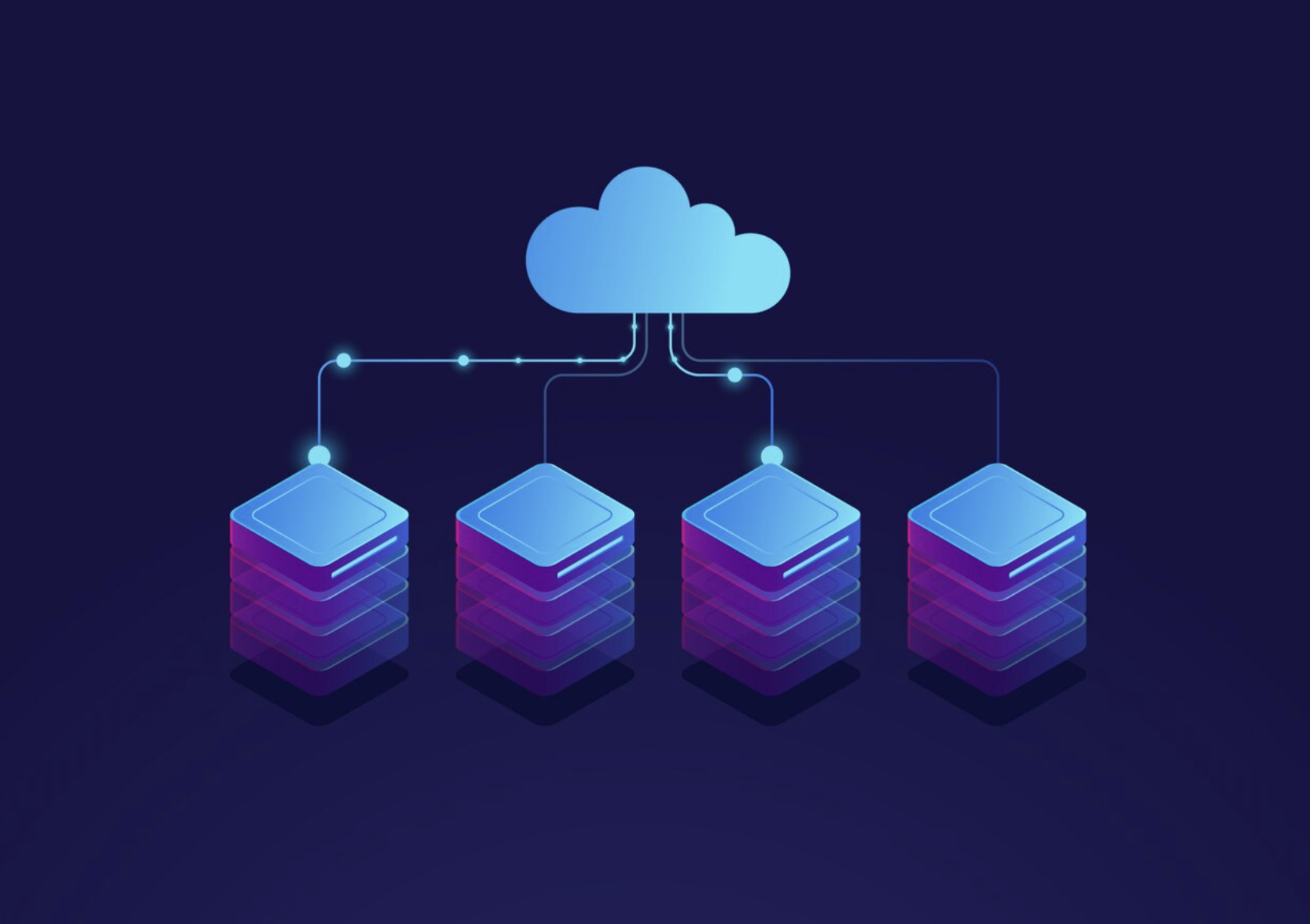The basics of cloud computing
April 24, 2024
Our services
Let's talkTable of contents
Quick Access

Cloud computing has revolutionized the way businesses and individuals manage, store and access data and applications. Since its emergence, it has been a key catalyst for technological innovation and business growth. However, understanding the fundamentals of cloud computing is essential to getting the most out of this powerful tool.
If you are looking to know the basics of cloud computing, in this article we will talk about the fundamental pillars and what you can get with these tools.

Let's start by understanding what cloud computing is
This is how AWS defines it in its documentation: “Cloud computing is the on-demand delivery of computing capacity, database storage, applications, and other IT resources through a cloud services platform over the Internet with a system pay-per-use pricing. Traditionally, a developer looking to build an application had to acquire, configure, and maintain the physical infrastructure and application. This is where cloud computing comes into play.”
Cloud computing:
- Provides quick access to low-cost, flexible IT resources
- No need to make large initial investments in hardware
- You can access all the resources you need almost instantly
- Access to on-demand and pay-per-use services is essential in cloud computing
Cloud Computing Fundamentals
1. Virtualization
Virtualization is one of the fundamental concepts underlying cloud computing. It consists of creating virtual versions of computing resources, such as servers, networks, storage and applications.
These virtual machines allow you to make the most of physical resources by dividing them into multiple independent work environments. With this, companies achieve greater flexibility, scalability and efficiency in the use of resources, as it allows users to run multiple operating systems and applications on a single physical hardware.
“By using virtualization, it is possible to interact with any hardware resource with greater flexibility. Physical servers consume electricity, take up storage space, and require maintenance. Access to these is often limited by physical proximity and network design. Virtualization solves all these limitations by abstracting the functionality of physical hardware into software. “It is possible to manage, maintain and use hardware infrastructure as a web application”, they noted in a specialized AWS article.

2. Self-service on demand
The ability to provision computing resources quickly and on demand is another fundamental pillar of cloud computing. Cloud services offer users the ability to request and configure resources as needed, without the need for manual intervention from service providers.
Through cloud computing, businesses can be more agile and responsive to changing business needs, as resources can be scaled up or down based on demand, optimizing the use of resources and reduces operating costs.
3. Elasticity
Elasticity refers to the ability to automatically scale computing resources based on fluctuations in demand. Cloud services offer the ability to dynamically increase or decrease compute, storage, and bandwidth capacity to meet changing business needs.
This ensures optimal performance even during times of high demand, avoiding underutilization of resources during periods of low activity. Elasticity is essential to ensure the availability and continuous performance of cloud applications and services.
“Cloud infrastructure scales on demand to support fluctuating workloads”, they noted on the IBM portal.
4. Pay as you go
The pay-as-you-go model is a fundamental component of cloud computing that provides greater economic efficiency and flexibility. Instead of incurring fixed costs for acquiring and maintaining physical infrastructure, users pay only for the resources they consume, based on actual usage.
With cloud computing, companies can optimize their operational and financial costs because they only pay for what they need and can flexibly adjust their expenses based on market conditions and business needs.
5. Measured service
The ability to monitor and measure resource consumption is a crucial aspect of cloud computing. Cloud service providers offer tools and metrics that allow users to monitor and evaluate performance, availability, and resource usage. This provides transparency and visibility into the performance of cloud services, allowing users to optimize their resource usage and make informed decisions about scalability and operational efficiency.

Understanding the fundamentals of cloud computing is essential to getting the most out of this transformative technology. Virtualization, on-demand self-service, elasticity, pay-as-you-go, and metered service are the fundamental pillars that underpin cloud computing and provide the foundation for an agile, efficient, and scalable technology infrastructure.
By mastering these concepts, businesses and individuals can take full advantage of the benefits of cloud computing and stay competitive in today's changing technology landscape.
Do you need cloud computing services to optimize your processes? At Rootstack, we have +14 years of experience supporting companies in their digital transformation. Contact us.
We recommend you this video
Related Blogs
-1.01.29-p.m.png)
How the development of an e-commerce solves the low sales of your business
-10.43.50-a.m.png)
Frequently asked questions about hiring web development companies
-3.51.27-p.m.png)
What are the steps to hire an IT outsourcing company?
-10.18.48-a.m.png)
5 pain points that nearshore software development solves for your business
-1.17.37-p.m.png)
We look at how AWS tools help you optimize costs
-9.19.54-a.m.png)